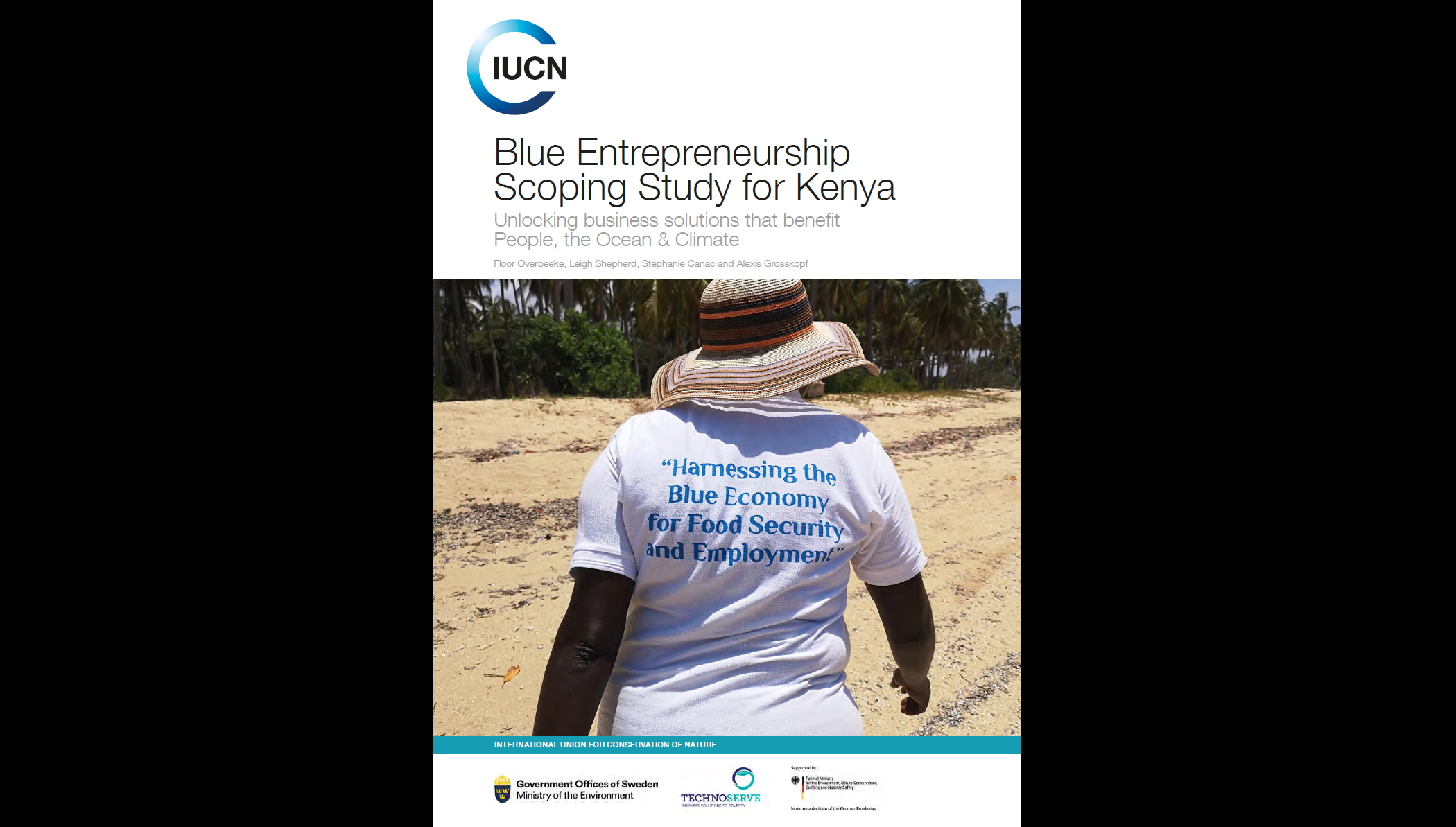Case-note: Gloucester Resources Limited v. Minister for Planning
By Rob Fowler - For the first time, a proposed open-cut coal mine has been rejected by a court in Australia on environmental grounds that include the projected carbon emissions that would arise from its operation and from the down-stream burning of its coal.

Photo: IUCN
Given the lengthy history of coal mining and export in Australia[1], this is a significant decision that has raised serious concerns for the coal industry in Australia.[2] It has been suggested that it also may have an impact on fossil fuel companies around the world.[3]
The Facts
Gloucester Resources Ltd. (hereafter “GRL”), which is reported to be “a private company held by Hans Juergen Mende, a German billionaire dubbed the ‘godfather of coal’,”[4] proposed to develop an open-cut coal mine in the Gloucester Valley, in the state of New South Wales (“NSW”) on the eastern coast of Australia. GRL expected the mine would produce 21 million tonnes of coking coal (to be used in steel production) over an expected life-span of twenty-one years. The Gloucester Valley is a predominantly rural region with many hobby farms, and has no prior history of coal mining. Its hub is the township of Gloucester, which was established in 1885 and had a population of 2,975 at the 2016 Census.[5]
The proposed mine required planning approval under the Environmental Planning and Assessment Act 1978 (NSW) (hereafter “the EPA Act”). The relevant planning authority, the NSW Planning and Assessment Commission, acting as the delegate of the Minister for Planning, refused approval for the mine on environmental grounds. GRL then appealed this decision to the NSW Land and Environment Court (hereafter “the court”), a specialist environmental court that is a branch of the NSW Supreme Court.
The appeal process
A distinctive aspect of state land-use planning laws in Australia has been the provision by the relevant planning legislation of a right to appeal against the decisions of planning authorities to a specialist court of tribunal. Such appeals constitute a hearing de novo of the original decision, although the appeal court may also consider any questions of law that may arise. The right of appeal is provided primarily to dissatisfied applicants, but may also be available to “third party” objectors to a proposed development in some, more limited circumstances.
In this instance, after GRL commenced its appeal, a local community group calling itself Gloucester Groundswell successfully applied to the court to be joined as a party in the proceedings. It was represented by the NSW Environmental Defenders’ Office, a public interest law firm, and was able to present expert witnesses and legal argument during the course of the proceedings. The appeal was heard over a period of two and a half weeks by Chief Justice Preston, the most senior judicial member of the court.
The decision
In a detailed judgment of some 152 pages, Preston, CJ provided extensive reasons for his decision to refuse the appeal. The primary reasons for his decision are summarised at para. 695 of his judgment, as follows:
“In this case, the exploitation of the coal resources in the Gloucester Valley would not be a sustainable use and would cause substantial environmental and social harm. The Project would have high visual impact over the life of the mine of about two decades. The Project would cause noise, air and light pollution that will contribute to adverse social impacts. The project will have negative social impacts on people’s way of life; community access to and use of infrastructure, services and facilities; culture; health and wellbeing; surroundings fears and aspirations. The project will cause distributive inequity, both within the current generation and between the current and future generations”.
The invocation of the principles of intra and inter-generational equity is of itself a noteworthy aspect of the decision and reflects a desire by some Australian courts (in particular the NSW Land and Environment Court) to elaborate upon and apply some fundamental legal principles associated with the concept of sustainable development.[6] But it is the reliance by Preston, CJ on the impact of carbon emissions from the project as a further reason for refusing approval of the project that has attracted considerable attention and comment.
The climate change aspect of the case
While the decision to refuse approval was strongly founded upon conventional planning and environmental considerations that were required to be addressed by the EPA Act, Preston, CJ also chose to explore the climate change implications of the project in considerable depth[7]. In doing so, he addressed many of the arguments for and against the mine that would normally be aired in political circles, rather than in a court. After finding that the project’s emissions would contribute to climate change,[8] he rejected a number of arguments advanced by GRL for why the project should nevertheless be approved. In particular, he found that:
- The possibility that the project’s emissions would be offset by reductions from other sources or sinks was “speculative and hypothetical”[9];
- It would not be rational to approve the project on the basis that “greater emissions reductions could be achieved from other sources at lower cost by other persons or bodies”[10];
- It had not been proven that refusal of the mine would lead to market substitution (that is, redirection of investment to countries such as India and Indonesia) or carbon leakage (that is, increased emissions through moving coal mining to other countries with lesser environmental standards)[11]; and
- The carbon emissions of the project could not be justified “on the basis that the project is needed in order to supply the demand for coking coal for steel production”.[12]
Having rejected these several arguments presented by GRL, Preston, CJ noted that, whilst the project would contribute a “meaningful amount” of GHG emissions:
“the better reason for refusal is the Project’s poor environmental and social performance in relative terms…The GHG emissions of the Project and their likely contribution to adverse impacts on the climate system, environment and people adds a further reason for refusal.”[13]
Thus the decision does not stand alone, or even principally, on the climate change considerations related to the project, but rather on broader planning and environmental considerations, together with a detailed cost-benefit assessment towards the end of the judgment that found the economic benefits of the project (as stated by an expert witness for GRL) were “uncertain and…substantially overstated”[14]. The ultimate conclusion, offered rather eloquently in the final paragraph of the judgment, is that “an open cut coal mine in this part of the Gloucester Valley would be in the wrong place at the wrong time.” [15] In terms of the “wrong time”, the final sentences of the judgment are compelling:
“Wrong time because the GHG emissions of the coal mine and its coal product will increase total concentrations of GHGs at a time when what is now urgently needed, in order to meet generally agreed climate targets, is a rapid and deep decrease in GHG emissions. These dire consequences should be avoided.”
Conclusions
The decision is a significant contribution to the growing body of climate change judicial rulings emerging across the world, many of which are cited in the judgment. However, an assessment of the likelihood that it will provide a precedent that might be followed in jurisdictions elsewhere must take into account the quite specific circumstances relating to the proceedings involved.
The “merit” appeal process conducted in this case is quite different from other forms of climate change litigation that are being pursued elsewhere, which usually involve assertions of improper legal process or disregard of civil or human rights. Unless other jurisdictions have similar appeal procedures, it is unlikely that many of the substantive policy arguments aired in this case could be considered by a court; instead, the focus will have to be on questions of a legal nature. It is also important to acknowledge that the original decision by the relevant planning authority was to reject the project, so that the court essentially engaged in an affirmation of this decision at first instance. And finally, even in Australia, it is unlikely that a similar case could arise under planning laws in other states, as mining activities are usually exempt from the application of state land-use planning laws. The NSW situation is a commendable exception in this regard.
Nevertheless, the decision is significant on two accounts: first, for being the first time that a coal mine has been rejected in Australia because of its future contribution to climate change; and second, for its detailed and reasoned rejection of a number of arguments advanced in support of the project, despite its GHG emissions. The attention it has attracted, both in Australia and elsewhere, is warranted, given these important aspects of the decision.
About the Author
 Photo: Rob Fowler
Photo: Rob Fowler
[1] At 2017, Australia was the largest net exporter of coal in the world (approximately one-third0 and the fourth largest producer (approximately 7 per cent): see International Energy Agency, Key World Energy Statistics 2017, IEA 2017, at 16.
[2] See Allens, “Client Update: NSW Court’s Ruling on Climate Change Raises Concerns for Coal Industry”, available at https://www.allens.com.au/insights-news/insights/2019/02/nsw-courts-ruling-on-climate-change-raises-concerns-for-coal/ (viewed 22.7.2019).
[3] See The Age, “These residents stopped a coal mine, made history and sent ripples through boardrooms around the world”, available at https://www.smh.com.au/environment/climate-change/these-residents-stopped-a-coal-mine-made-history-and-sent-ripples-through-boardrooms-around-the-world-20190214-p50xw9.html (viewed, 22.7.2019).
[4] Ibid.
[5] Australian Bureau of statistics, 2016 Census QuickStats, Gloucester, available at https://quickstats.censusdata.abs.gov.au/census_services/getproduct/census/2016/quickstat/SSC11685 (viewed 22.7.2019).
[6] See further, Fowler, RJ, “Environmental Principles in Australia”, in Kramer, L. and Orlando, E. (eds.), Principles of Environmental Law, Elgar Encyclopaedia of Environmental Law, Volume VI, Edward Elgar Publishing, Cheltenham UK, 2018, pp 476 – 493.
[7] The basis for doing so was a provision in one of the relevant planning policy instruments applicable to the project (Clause 14(2) of the Mining State Environment Planning Policy (“SEPP”), which required the consent authority to “consider an assessment of the greenhouse gas emissions (including downstream emissions) of the development …” (quoted in the judgement at para. 491).
[8] At paras 525 – 8,
[9] At paras. 529-30.
[10] At paras 531-3.
[11] At paras. 534-45.
[12] At paras. 534-49.
[13] At para.556.
[14] At para. 664.
[15] At para. 699.



